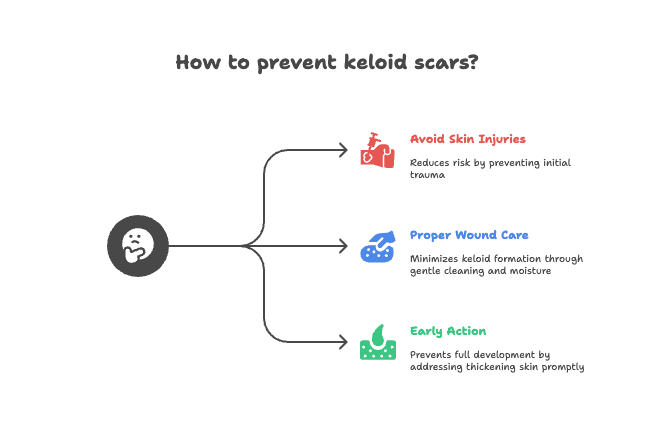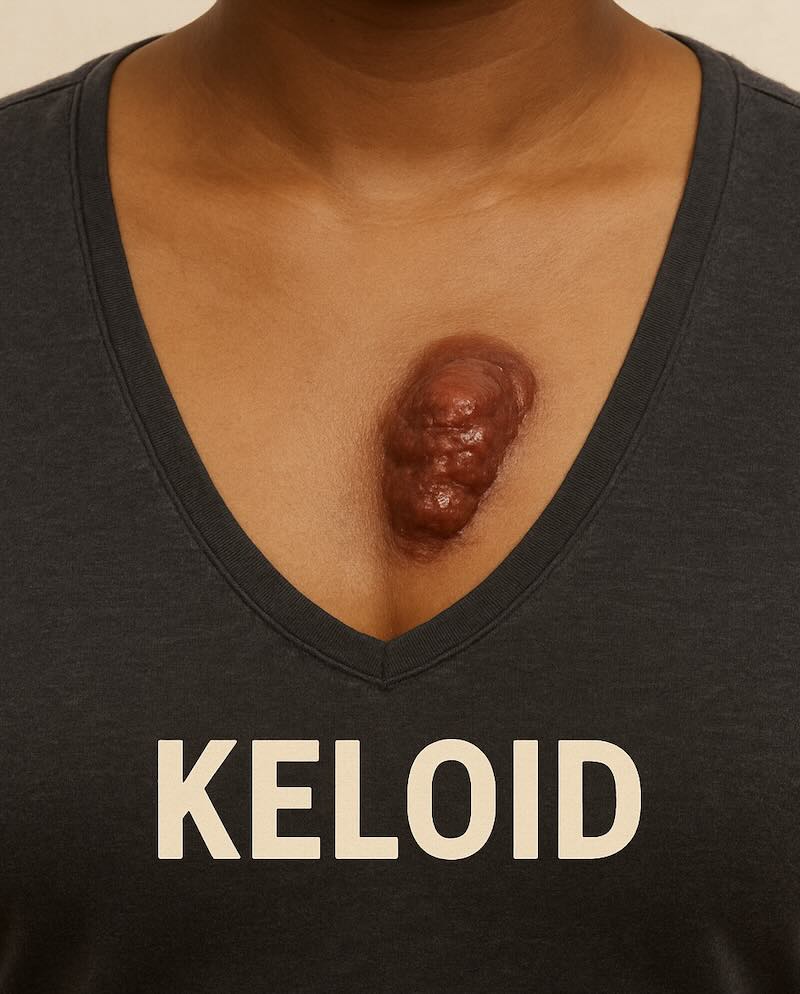Keloids challenge both skin health and self-confidence. Unlike typical scars, keloids involve excessive growth of scar tissue, extending beyond the initial wound site. They often occur after skin injuries, including acne, piercings, burns, surgeries, and even minor scratches or insect bites. If you have darker skin or a family history, your risk increases. Genetics and local skin tension play crucial roles in this abnormal healing process, so remaining aware of any changes after skin trauma is essential.
Causes and Prevention of Keloids
Skin produces collagen during healing. Occasionally, this process becomes overactive, causing keloids. Factors such as genetic predisposition and tension around a wound make some people more susceptible. To decrease your risk, avoid unnecessary skin injuries whenever possible. Practice proper wound care: clean any wounds gently, apply petroleum jelly, and cover with a sterile bandage. Using silicone gel pads and pressure earrings after piercings decreases the likelihood of developing thick scars. Furthermore, respond quickly if you notice thickening or unusual growth after trauma, since early intervention often prevents keloids from forming.

Non-Surgical Keloid Treatments Available
Derma Clinic Kathmandu excels in offering advanced, non-surgical options for keloid management, designed to improve both aesthetics and comfort.
- Intralesional Steroid Injection (IL-Injection): Specialists at Derma Clinic administer corticosteroids directly into keloids, targeting the scar at its source. This approach not only reduces inflammation, but also prevents excessive collagen from building up. Patients usually see their keloids flatten, soften, and become less noticeable after treatment.
- Liquid Nitrogen Cryotherapy: Rather than removing scar tissue surgically, clinicians use extremely cold temperatures to freeze and destroy keloid cells. This method typically involves several sessions and often yields excellent outcomes, especially for smaller keloids. Combining cryotherapy with other therapies further enhances results.
- Topical Silicone Gel and Other Creams: Applying silicone gel pads and medicinal creams can complement in-clinic treatments. These products support the healing process, especially when used consistently over several weeks.
- Emerging Therapies: Patients also benefit from laser therapy, compression treatments, and personalized ointments, which target specific keloid characteristics.
Why Choose Derma Clinic Kathmandu?
Derma Clinic Kathmandu stands out by blending modern equipment with compassionate, professional care.
- Patients receive individualized treatment plans, tailored precisely to the type and size of each keloid.
- Experienced dermatologists personally oversee every step of your journey, maximizing both safety and results.
- The clinic monitors progress closely and provides guidance on aftercare, giving patients peace of mind throughout the process.
Consistent innovation, coupled with strict hygiene and comfort standards, ensures Derma Clinic Kathmandu provides the best possible experience.
Take Action for Smoother Skin
If you struggle with keloids or feel concerned about new scars, don’t hesitate to act. Schedule your consultation with Derma Clinic Kathmandu and discover personalized, effective solutions for smoother, healthier skin. Act now and let experts help you regain your confidence and well-being.
Book your consultation now by calling us or Sending message / whatsapp us 9801358600 and let Derma Clinic Kathmandu help you to manage your Keloid.


